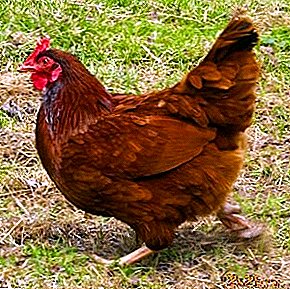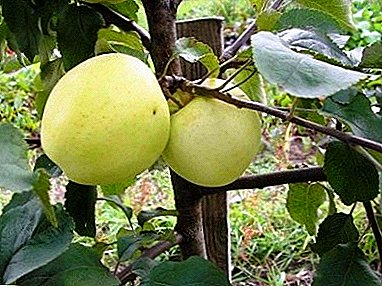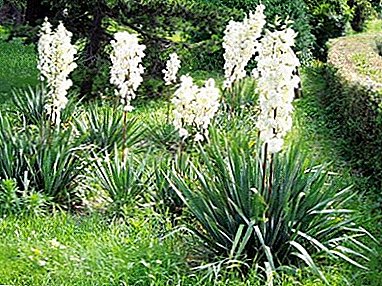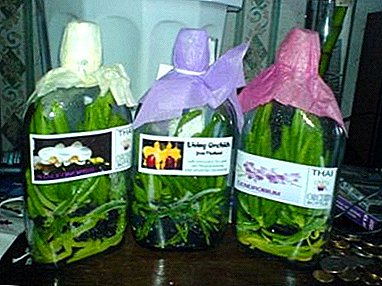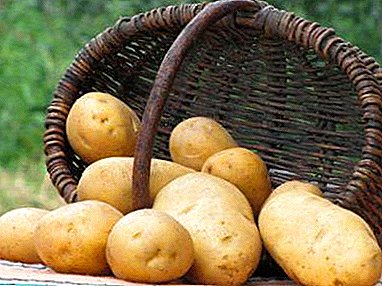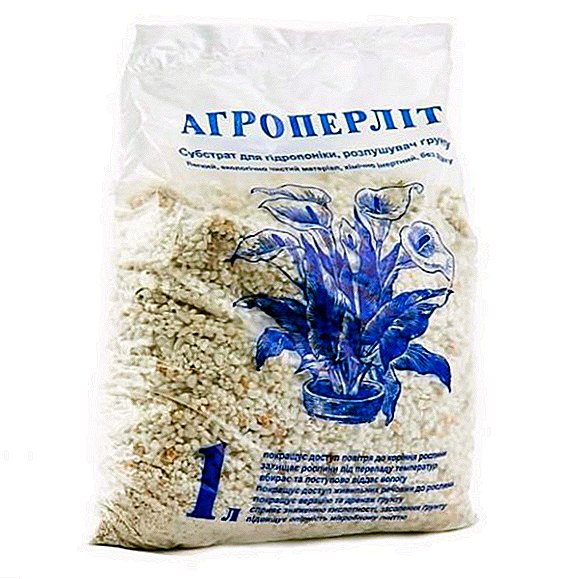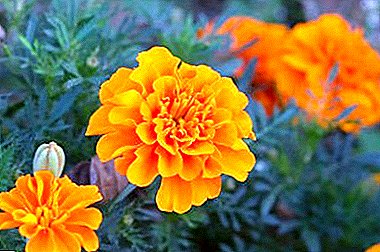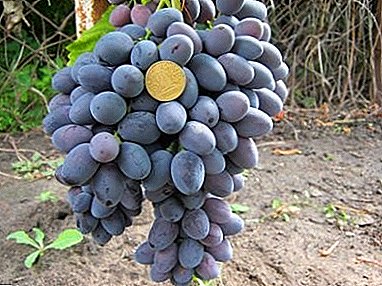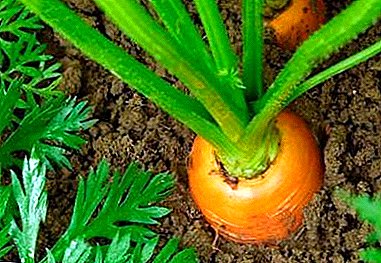
Carrots - a rather unpretentious culture. And even it will be better to grow and develop if it is watered in time and fertilized into the soil.
Fertilizer is necessary for good growth, proper nutrition of roots, their immunity and a rich harvest.
It is important not just to bring nutrients to the soil, but to do it competently, with the intention of bringing the maximum benefit to the plant. Including - in the summer. Then the positive effect does not take long. More information about the nuances of feeding carrots will tell this article.
How to fertilize the root for growth?

- Fertilizing carrots in early summer (June-July) is very important for good growth and development of the plant.
- Regular feeding and a sufficient amount of nutrients the plant requires at the end of summer (August).
- Without additional nutrition, carrots will not be able to form correctly and will die at all.
- When making fertilizer in the summer should take into account the quality of the soil. For better absorption of nutrients, it is better to plow through the soil.
- Temperature variations affect the active growth of plants. For fertilizer is better to choose a period of stable temperature.
- Fertilize carrots should be in the rain or watering. In this case, nutrients are better absorbed by root crops.
- As part of fertilizer for carrots, such elements as ash, boron, nitrogen, organic matter, phosphorus, and potassium must be present.
We offer to watch a video on how to fertilize carrots:
How many times can you feed a vegetable outdoors?
- Over the entire growth period, carrots should be fed four times.
- Three main feeding spend in June. During this period, the initial phase of plant growth occurs. It needs nutrients more than ever: organic and mineral fertilizers.
Peculiarities of feeding:
- The first feeding is carried out 3-4 weeks after germination.. During this period, select the necessary trace elements for the growth of tops and strengthen roots.
- Feeding is repeated two weeks after fertilization.. During this period, make preparations that contain phosphorus and potassium.
- The third dressing falls in late June - early July. At this time, the root grows especially fast and picks up the juice. To improve the ripening process, it is appropriate to use a mixture of wood ash.
- The fourth time carrots are fed a month before harvest. The beds are watered with a solution containing potassium or boron, complexes with calcium, phosphorus. These components become important at the final stage of crop development.
Ash
At the beginning of summer

- Top dressing with ashes is suitable for the very first stage of carrot fertilizer.
- Ash derived from burning leaves and grass contains potassium, calcium and phosphorus. These elements are enough to feed the roots.
- To substances quickly hit the root, prepare ash solution.
Proportions:
- 200 g of substance.
- 3 liters of boiling water.
Cooking process:
- Components mix.
- Insist within 24 hours.
- Add 10 liters of water.
Application scheme:
- Pre-pour the soil.
- Make grooves between rows.
- Add a solution to the recesses.
Application scheme:
- Spread on the surface of the bed.
- Sprinkle with earth using a rake.
In the end
- Used in watering.
- Allows you to improve the taste and size of the roots at the final stage of the formation of the crop.
 Proportions:
Proportions:
- A glass of dry ash.
- 3 liters of water.
Cooking process:
- Components mix.
- Let it stand.
Application scheme:
- Pre-pour the soil.
- Make grooves between rows.
- Add a solution to the recesses.
Boron
- It is recommended to use in July.
- When used properly, the roots will have a sweet taste.
Proportions:
- 1 sheet of hot water.
- 1 teaspoon boric acid.
Cooking process:
- Components mix.
- Let it stand.
Application scheme: The solution is used to spray the tops.
We offer to watch a video on the use of boric acid as a fertilizer for carrots:
Nitrogen
June and July
- It is advisable to use in early summer to support the development of root vegetables.
- Carotene and protein nitrogenous solutions improve the taste and nutritional composition of the future crop.
- Nitrogen helps the leaf to become thick and massive.
- With an excess of nitrogen in this period in carrots sugar decreases, it becomes watery, the crop is stored worse.
- Lack of nitrogen affects the color of leaves and stems. They may turn yellow.
- Fruits grow dry and small.
In August
- In August, nitrogen is added in a small amount.
- With an excess of nitrogen during this period, fruits can become large and loose with bitter aftertastes. The safety of the harvest will also decrease.
Infusion of weeds
- Infusion of weeds, in particular nettle, is an excellent folk remedy for carrot fertilizer.
- Made at the stage of the formation of the root.
- Positive effect on sugar saturation.
Phosphorus
At the beginning of summer
- The introduction of phosphorus in June is the basis for rapid plant growth.
- Element saturates the plant with sugar, gives a beautiful orange color, accumulates keratin.
- Protects from rotting.
- With a lack of phosphorus, the leaves acquire reddish or purple stripes and spots, curl and dry out. Fruits grow small, with a weak root system and a bad taste.
In the end
In August, when active harvest formation occurs, carrot phosphorus is needed. It has a positive effect on the sugar content and flavor characteristics of the root.
Fertilizer proportions:

- 15 g of urea.
- 20 g of potassium nitrate.
- 15 g double superphosphate.
- 10 liters of water.
Cooking process: mix components.
Application scheme:
- Water in a small amount at the root of the plant.
- The volume is enough for 10 square meters.
Potassium
- By entering the plant, potassium helps retain moisture and has a positive effect on the shelf life of root crops.
- Necessary for the growth of the root system, the future storage of the crop.
- If there is little potassium, the carrot stops growing, the skin hardens, the fruit becomes fibrous, and the tops infect pests.
Fertilizer proportions (for the first feeding):
- 25 g of ammonium nitrate.
- 30 g of superphosphate.
- 30 g of potassium salt.
- 10 liters of water.
Cooking process: mix components.
Application scheme:
- Water in a small amount at the root of the plant.
- The volume is enough for 10 square meters.
Fertilizer proportions (for the second feeding):
- 30 g of granulated potassium sulfate.
- 10 liters of water.
Cooking process: mix components.
Application scheme:
- Water in a small amount at the root of the plant.
- Bring in moist soil.
- The volume is enough for 1 square meter.
What can not be fertilized?
It is better not to use chlorine and chlorine containing fertilizers.. Accumulated substances can lead to food poisoning.
The consequences of feeding errors
- Improperly prepared solution can cause the solution to lead to the death of the crop.
- The combination of organic matter with a large number of minerals can turn a plant into a non-natural, unhealthy organism.
- Fertilizing too often can damage the root crop.
- Lack of fertilizer will deprive the plant of the opportunity to grow and develop normally.
Fertilize carrots should be throughout the entire period of growth and development. This should be done consistently, trying to adhere to a clear schedule for the introduction of organic and mineral substances. The result is not long in coming. The harvest of juicy, sweet, tasty and pleasant-looking root crops will be the best reward for the work invested.


